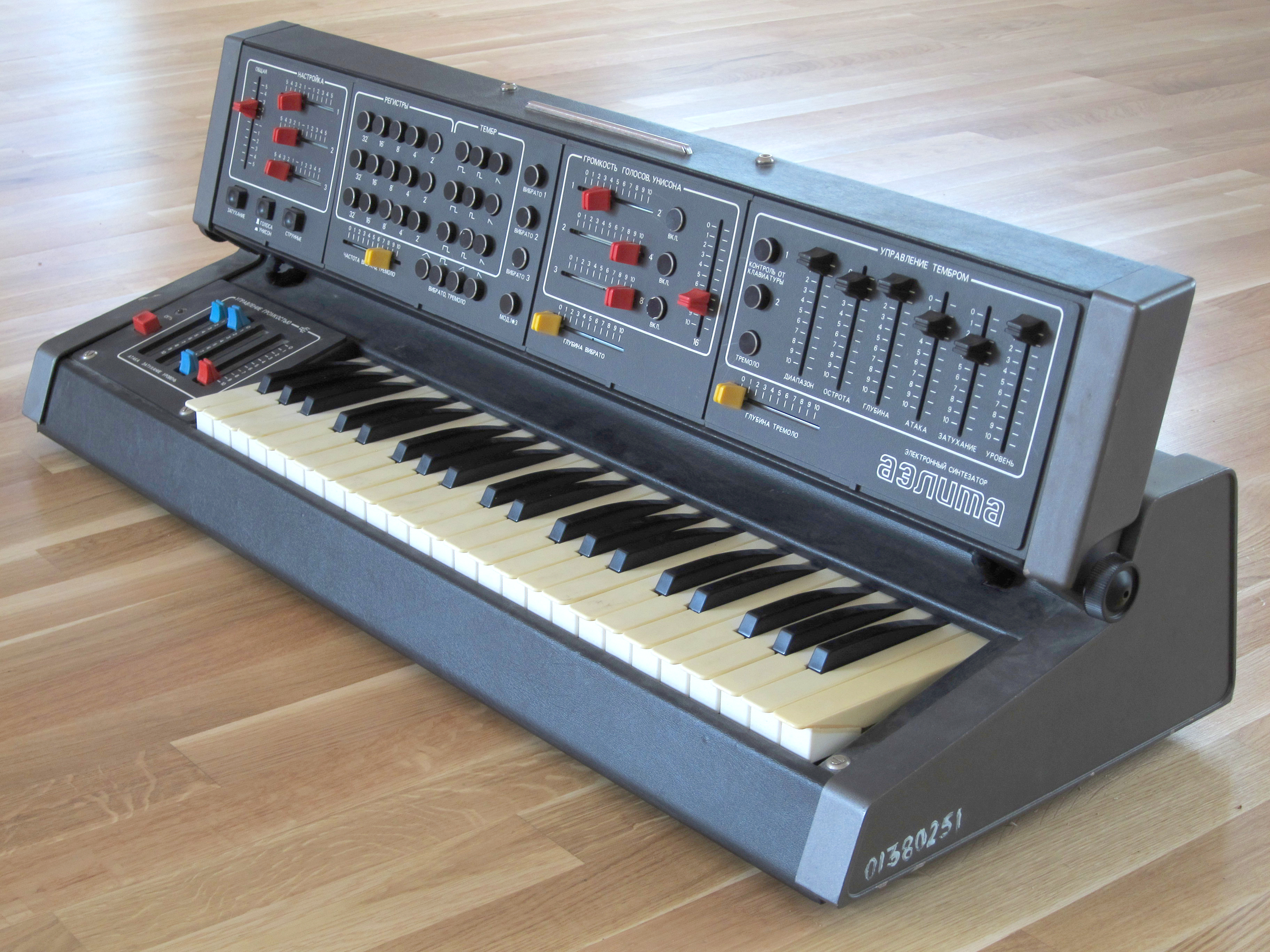Aelita (synthesizer) on:
[Wikipedia]
[Google]
[Amazon]
 Sometimes referred to as the Murom Aelita, the Aelita is a monophonic
Sometimes referred to as the Murom Aelita, the Aelita is a monophonic
 Sometimes referred to as the Murom Aelita, the Aelita is a monophonic
Sometimes referred to as the Murom Aelita, the Aelita is a monophonic analog
Analog or analogue may refer to:
Computing and electronics
* Analog signal, in which information is encoded in a continuous variable
** Analog device, an apparatus that operates on analog signals
*** Analog electronics, circuits which use analo ...
synthesizer
A synthesizer (also spelled synthesiser) is an electronic musical instrument that generates audio signals. Synthesizers typically create sounds by generating waveforms through methods including subtractive synthesis, additive synthesis and ...
manufactured in the Soviet Union in the 1980s.
History
Manufacturing started in 1980 at the Murom radio plant. The electronics was revised in 1986, but the features remained the same.Features
Physical features
Although its design seems inspired from American and Japanese synthesizers of the previous decade, with a dark aluminum body and near vertical control panel, the Aelita's looks are distinctive in the details. They feature large colored plasticsliders
Slider or Sliders may refer to:
Arts
* K.K. Slider, a fictional character within the ''Animal Crossing'' franchise
* ''The Slider'', a 1972 album by T. Rex
* ''Sliders'' (TV series), an American science fiction and fantasy television series
* S ...
instead of the more common rotary dials, and round or rounded push-button
A push-button (also spelled pushbutton) or simply button is a simple switch mechanism to control some aspect of a machine or a process. Buttons are typically made out of hard material, usually plastic or metal. The surface is usually flat or sh ...
s instead of flip or rotary switches. The vertical sliders are oriented so that their maximum labelled value is at the bottom, instead of the top as is more common. A sole red LED
A light-emitting diode (LED) is a semiconductor Electronics, device that Light#Light sources, emits light when Electric current, current flows through it. Electrons in the semiconductor recombine with electron holes, releasing energy i ...
lights up when the instrument is on.
Its hinge-mounted upper control panel can be shut like a piano keyboard's lid, thus protecting the buttons and sliders and preventing accidental settings changes during transportation, and changing the general shape of the instrument to one that is not playable but more transportable.
The keyboard
Keyboard may refer to:
Text input
* Keyboard, part of a typewriter
* Computer keyboard
** Keyboard layout, the software control of computer keyboards and their mapping
** Keyboard technology, computer keyboard hardware and firmware
Music
* Musi ...
is 3.5 octave
In music, an octave ( la, octavus: eighth) or perfect octave (sometimes called the diapason) is the interval between one musical pitch and another with double its frequency. The octave relationship is a natural phenomenon that has been refer ...
s wide and made of 44 unweighted, full-sized plastic keys ranging from F to C.
All controls are labelled in Russian, using Cyrillic script.
Functional features
The Aelita has 3oscillators
Oscillation is the repetitive or periodic variation, typically in time, of some measure about a central value (often a point of equilibrium) or between two or more different states. Familiar examples of oscillation include a swinging pendulum ...
, each with 3 fixed waveshapes (''Saw'', ''Pulse'' and ''Square''), plus a 4th oscillator only active in ''unison'' mode, amplitude cross-modulation, a low-pass filter with resonance, one LFO and two envelope generators, all arranged in a fixed architecture typical of subtractive synthesis. It has a maximum range
Range may refer to:
Geography
* Range (geographic), a chain of hills or mountains; a somewhat linear, complex mountainous or hilly area (cordillera, sierra)
** Mountain range, a group of mountains bordered by lowlands
* Range, a term used to i ...
of 7.5 octaves. It is monophonic, meaning that it can play only one note at a time (although detuning of each oscillator makes it possible to play fixed intervals or chords instead of notes).
It has two special modes: the ''unison'' mode creates an unison-like effect on each oscillator (reducing the range as a tradeoff), and the ''strings'' mode creates a vibrato-like effect independent of the LFO.
Although of a sturdier construction, it lacks several features commonly found on American and Japanese brand synthesizers at the time, such as : velocity response, portamento, pitch and modulation wheels or levers, settings memory, and (from late 1982 on) MIDI implementation.
Its output is monaural.
Sonic character
Its sonic qualities have been consistently qualified as "fat". Other reviewers also call them "impressive", and sometimes "aggressive". There is audible background noise at the output, resembling oscillator bleed.References
{{reflist Music of the Soviet Union Synthesizers Goods manufactured in the Soviet Union Soviet brands